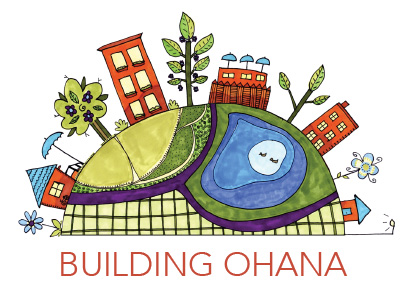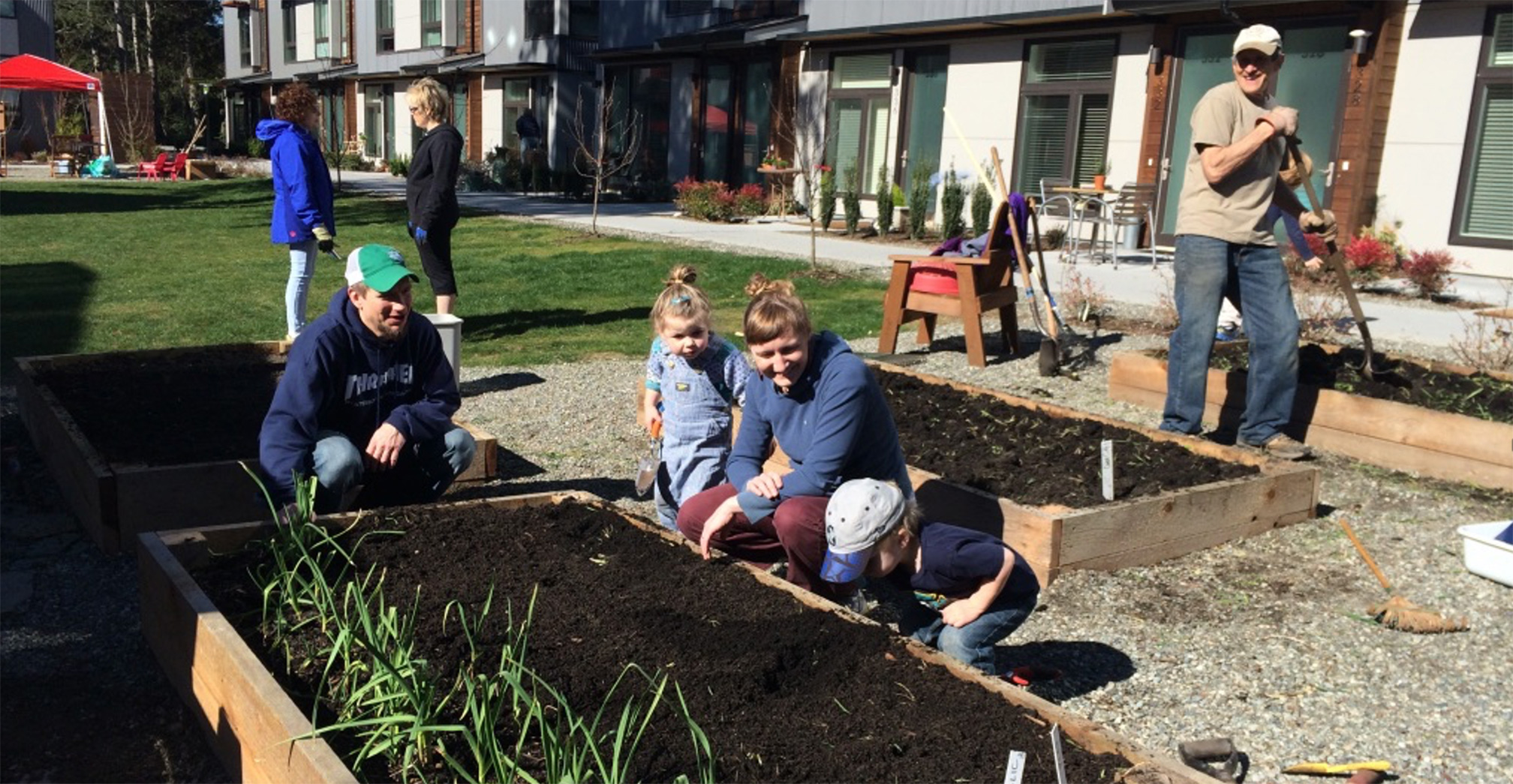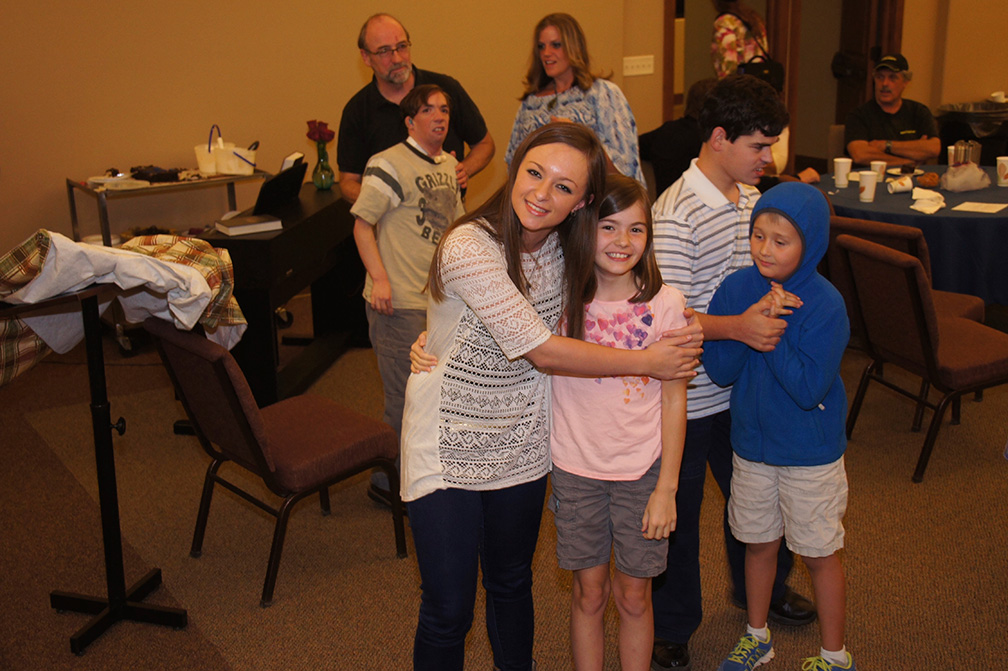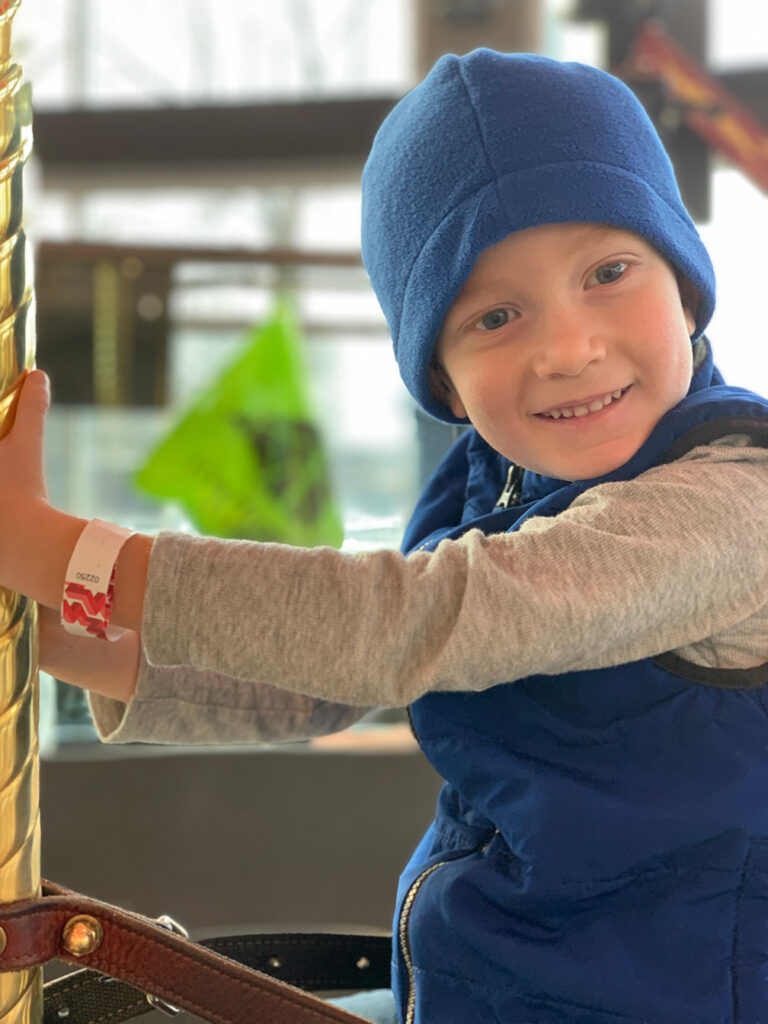The support of our friends, family, and neighbors is essential, especially for those of us facing extra challenges in our daily lives. I speak from my own experience as a single mother, working full time and raising two children. I live in a small community surrounded by friends and family who have been essential to my day-to-day survival. Without those who have stepped in to help care for my children while I travel for work, or the friends who are there with care and support and a pot of soup, I would not be able to live a full and productive life.
My neighborhood, The Village at Grow Community, on Bainbridge Island, is unique in that it is a community designed specifically to connect us, with social infrastructure intentionally designed into every aspect of the built environment. Social infrastructure is generally understood to be those places in our communities designed to bring people together – parks, playgrounds, community gardens, community centers or on a larger scale, libraries, museums, and other public spaces. Very few residential communities outside of cohousing communities have been designed with social infrastructure in mind. Grow Community is one of the first to demonstrate how powerful seemingly small elements of the built environment can be to connect people on a daily basis and to create a neighborhood that grows into a community of connection and support.
A strong social infrastructure is foundational to my neighborhood at Grow Community. Each time I leave my home, I step into community gardens where my neighbors are often out planting or tending to the vegetable beds. We run into each other on the way to the central mailbox or the shared recycle bins. Our youngsters enjoy playing on the pathways that crisscross the neighborhood. My retired neighbor is often on her front porch to greet my teens when they come home from school and I’m not yet home from work. She tends to know more about what my kids are up to before I do. In this way, she is invaluable to our family.
The result of all of this is that I know my neighbors well and we take care of each other in the way that neighbors often do. If a young one falls off their scooter and scrapes a knee, someone is there to provide comfort and help them home. My teens know that if I am at work and they need something, they can always check in with the neighbor across the path. We meet at the community center for pancake breakfast or on the green for a harvest picnic. All of this happens because our Grow neighborhood was designed to bring people together as they go through their daily lives. Because it was designed with social infrastructure at its core.
I was a part of the team that designed and built The Village at Grow Community and I now have the unique experience of living in that same community, experiencing every day the benefits of its thoughtful design. That thoughtful design was the result of listening to people and understanding their needs. Grow Community was created, not just by the architects and urban planners, but through an extensive community-led, iterative design process. The result is a neighborhood designed specifically to connect people as they live their natural lives.
BUILDING OHANA uses this same approach. As architects, developers, and even professionals working in the disability world, we cannot presume we understand what people need or want in their homes and neighborhood. We also recognize that every person will have different needs and abilities, and will experience OHANA differently. Since 2015, we’ve been reaching out to stakeholders in our community, including those who will live in OHANA — potential residents with I/DD, their parents, their caregivers, and many others — to gather their thoughts and ideas. As we launch this next phase of designing OHANA Village and the homes within it, we will be continuing these conversations, inviting anyone interested to help us design the neighborhood so it becomes a place of connection and belonging. Only through this inclusive design process will we be equipped to create something that has never been built before, a community of Intentional Neighboring, supporting people of all abilities through the lifecourse. I look forward to learning from everyone who will participate in this process as we strive to better design communities for people of all ages and abilities.
Note: if you wish to be a part of this conversation and contribute to the design of the OHANA neighborhood, please CLICK HERE and fill out the form so we can send you an invitation to participate. We hope you’ll join us.
Written by Marja Williams, Real Estate Development Director BUILDING OHANA











